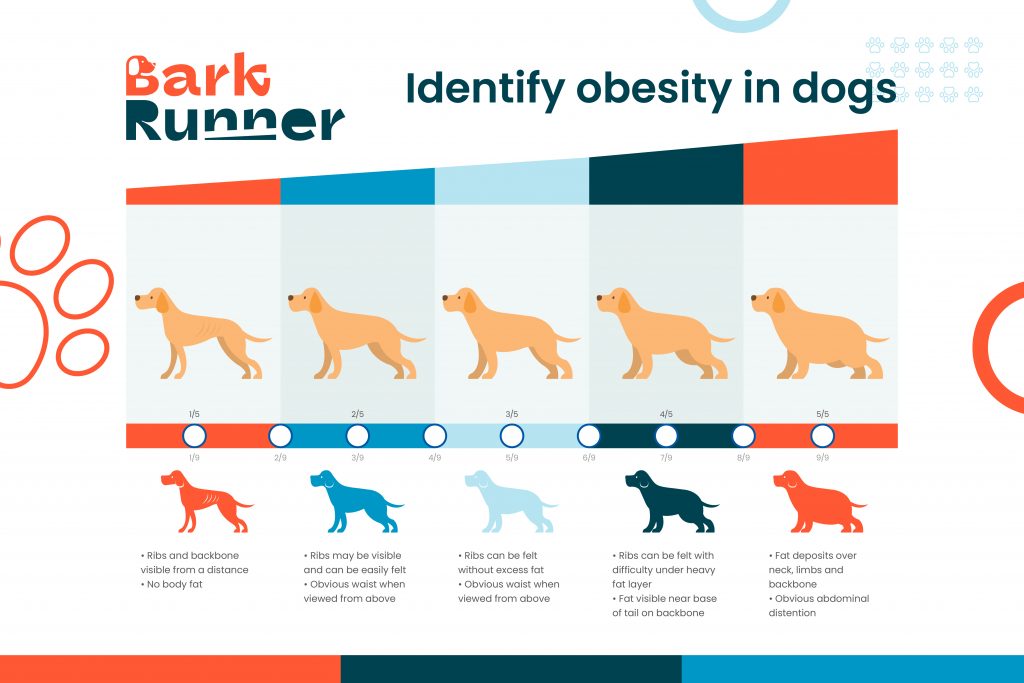More and more, our furry companions are facing a health crisis that’s mirroring our own – obesity. In this comprehensive guide, we’ll tackle this growing concern within the dog community and the actionable steps pet owners can take to address this issue head-on.
From understanding the reasons behind canine obesity to learning how to help your dog shed the extra pounds, we’ve got you covered. If your fluffy friend is carrying a little too much weight, or if you want to stay informed about keeping your pet healthy and happy, read on.
The Scope of the Problem of Obesity in Dogs
Obesity in dogs isn’t just a cosmetic issue; it’s a serious health problem with implications that can drastically reduce the quality and length of life for our beloved pets. According to a survey by the Association for Pet Obesity Prevention, more than 55% of adult dogs in the US are overweight or obese.
These numbers are startling and bring to light a concerning aspect of pet health that requires attention and action. But what exactly does obesity in dogs entail, and why is it such a significant problem? Let’s see.
What causes canine obesity?
Just like in humans, the leading cause of obesity in dogs is an imbalance between the calories they consume and the energy they expend. However, several common factors contribute to this imbalance, including:
- Overfeeding and feeding of energy-dense, high-fat foods
- Lack of exercise or reduced activity levels
- Breed and genetics that predispose dogs to weight gain
- Age and spaying/neutering
Identifying which of these factors, or what combination of them, is contributing to your dog’s obesity is the first step in combating the issue.
Understanding the Health Risks
Overweight dogs face a higher likelihood of developing:
- Diabetes mellitus
- Heart disease
- Respiratory conditions
- Hypertension
Additionally, obesity can exacerbate existing health conditions, including musculoskeletal problems and joint diseases such as osteoarthritis. In the long term, these health issues can lead to a reduced life expectancy and a lower quality of life for your pet.
Identifying Obesity in Your Dog

It’s not always easy to tell if your dog is carrying extra weight, especially if you see them every day. Use these tips to identify obesity in your dog:
Body Condition Scoring
Veterinarians often use a body condition scoring (BCS) system to evaluate a dog’s weight. This involves a simple, hands-on assessment of your dog’s overall body shape and the ability to feel (but not see) the ribs without excess fat covering.
BCS acts as a guide for discerning obesity or malnourishment. It involves palpating the dog’s ribs to determine the fat level; ideally, the ribs should be palpable with a slight fat cover.
Beyond this hands-on technique, understanding the distribution of fat around the waist and near the base of the tail is crucial.
Integrating visuals with tactile assessments can provide a more nuanced understanding of your dog’s health status. Engaging in regular BCS evaluations helps dog owners become adept at noticing subtle changes in their pet’s condition, thereby facilitating prompt dietary adjustments or veterinary consultations if necessary.
Visual Examination
A comprehensive visual examination serves as a critical tool for identifying overweight conditions in dogs. Beyond the basic checks for a defined waistline and abdominal tuck, observing your dog’s mobility and energy levels can offer additional clues.
An overweight dog might display reluctance towards exercise or exhibit labored breathing post mild activity. Capturing monthly photographs from standardized angles can offer a visual timeline of your dog’s physique, allowing for easier comparison and better detection of weight gain over time.
Weigh-Ins
Regular weigh-ins are more than a routine check; they are a critical component of your dog’s health monitoring regime. Establishing a baseline weight at your veterinarian’s office is the first step.
It’s essential to understand that weight fluctuation within reason is normal; however, a consistent upward trend or sudden weight gain signals the need for dietary adjustments or a health evaluation. At BarkRunner, with each class, we weigh your dog and keep a personalized record of his condition and progress, as well as make a plan dedicated just to his situation and goals.
Understanding that your dog is overweight is the first hurdle, and every pet owner should perform these simple checks regularly to monitor their dog’s weight.
Combatting Canine Obesity
Once obesity is recognized, effective strategies can be put in place to help your dog achieve a healthier weight.
- Dietary Adjustments: Switching to a balanced, portion-controlled diet, perhaps one recommended by your vet, can be a game-changer. High-quality, low-fat, and high-fiber foods can help your dog feel full and satisfied without consuming excess calories.
- Exercise Regimen: Incorporating regular activity into your dog’s daily routine is crucial. This could be as simple as increasing the length of daily walks or making playtime more active.
- Regular Veterinary Visits: A professional can provide personalized advice and help with setting realistic weight loss goals. They can also monitor your dog’s progress and health, ensuring the chosen weight loss strategies are effective and safe.
By tackling obesity with a holistic plan incorporating these various components, you can help your dog achieve and maintain a healthy weight.
The Role of Exercise in Weight Management
Exercise is a crucial component of weight management for dogs. Here’s how it helps:
- Burning Calories: Just like in humans, regular physical activity helps dogs burn off excess calories and maintain a healthy weight.
- Strengthening Muscles: Exercise helps dogs build and maintain muscle mass, which is important for overall health and mobility.
- Cardiovascular Health: Regular activity keeps the heart healthy and can prevent or manage heart disease, which can be a consequence of obesity.
- Mental Stimulation: Active play and exercise help dogs stay mentally sharp and can prevent boredom and the behavioral issues sometimes associated with it.
Incorporating more activity into your dog’s routine is a powerful tool in the fight against obesity.
What Happens if Obesity Goes Untreated?
Obesity can lead to a myriad of health problems if left unchecked. Here’s what could happen if obesity goes untreated:
- Diabetes Mellitus: Obese dogs are more likely to develop diabetes, a disease that can be life-threatening if not managed properly.
- Heart Conditions: Excess weight puts stress on the heart and can lead to conditions like congestive heart failure.
- Respiratory Problems: Obesity can make breathing difficult and lead to issues like tracheal collapse or laryngeal paralysis.
- Shortened Lifespan: Obese dogs often have a significantly shorter lifespan than their healthy-weight counterparts.
Final Thoughts on Obesity in Dogs
Obesity is a multifaceted issue that requires a combination of dietary, activity, and sometimes behavioral adjustments.
Remember: your dog’s well-being is in your hands. By understanding the complexity of obesity, staying informed, and taking proactive measures, you can help your dog live a long and healthy life.
It’s time to start the fight against obesity in our canine companions, and it begins with the knowledge and actions of each pet owner. Together, we can make a positive impact on the health of dogs around the world.



